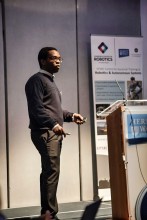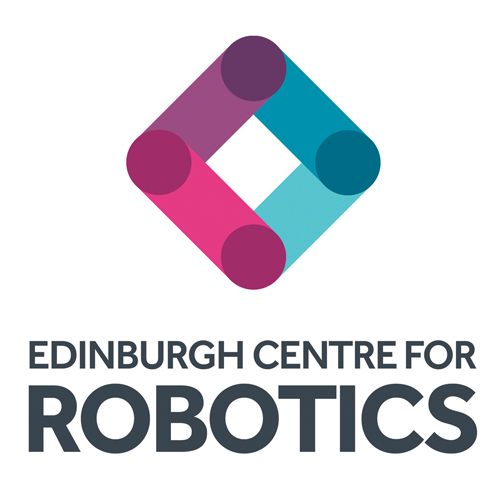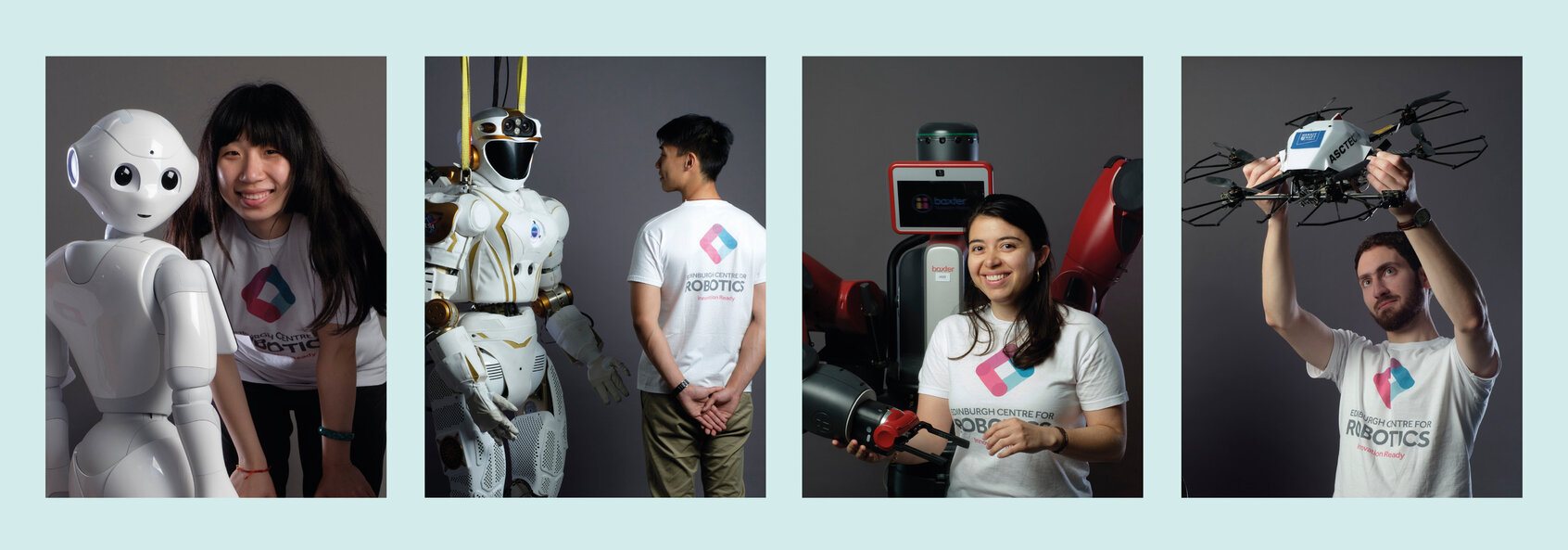Dr Emmanuel Kahembwe
A key requirement for effective human-robot interaction is that the robot must be able to make sense of the current task context. It should then be able to exploit this knowledge and respond appropriately while meeting other underlying task requirements.
For instance, in a situation where the human user and robot are jointly acting in a scene, e.g., assembling objects on a table, the robot must:
- determine what the human user is trying to do at a high level - handing over something, reaching for something, moving in a task irrelevant way, etc.
- choose a motion type for itself (drawing from a set that may have been devised or learnt offline) and execute controlled motions in an anticipatory way to achieve a task (e.g., putting away or assembling objects).
Principal goal of the project: The goal of this project is to implement modules that enable a robot to deduce the type of motion being executed by a human user and quickly respond with an appropriate plan for assistance, within the constraints of a mobile manipulation task. This should be implemented and demonstrated on a physical robot but remain platform agnostic.
A very important part of this project is the offline analysis and categorisation of motions, so that the above mentioned online steps are of low complexity and fast.
The conceptual ideas underpinning the above description involve:
- devising and/or learning category descriptions of motions, both for the human and robot, when performing tasks within a domain.
- devising estimation (e.g. hierarchical particle filter) and motion synthesis techniques that can be implemented on a physical robot used within mobile manipulation domains.
This is a systems project in that many of the above steps will involve bringing together many existing software packages (including those already available within the ROS environment), and combining them with the techniques developed here.
References:
- Luke S. Zettlemoyer , Hanna M. Pasula , Leslie Pack Kaelbling, Logical particle filtering, In Proc. Dagstuhl Seminar on Probabilistic, Logical, and Relational Learning, 2007.
- F. T. Pokorny, M. Hawasly, S. Ramamoorthy, Multiscale topological trajectory classification with persistent homology, In Proc. Robotics: Science and Systems (R:SS), 2014.


